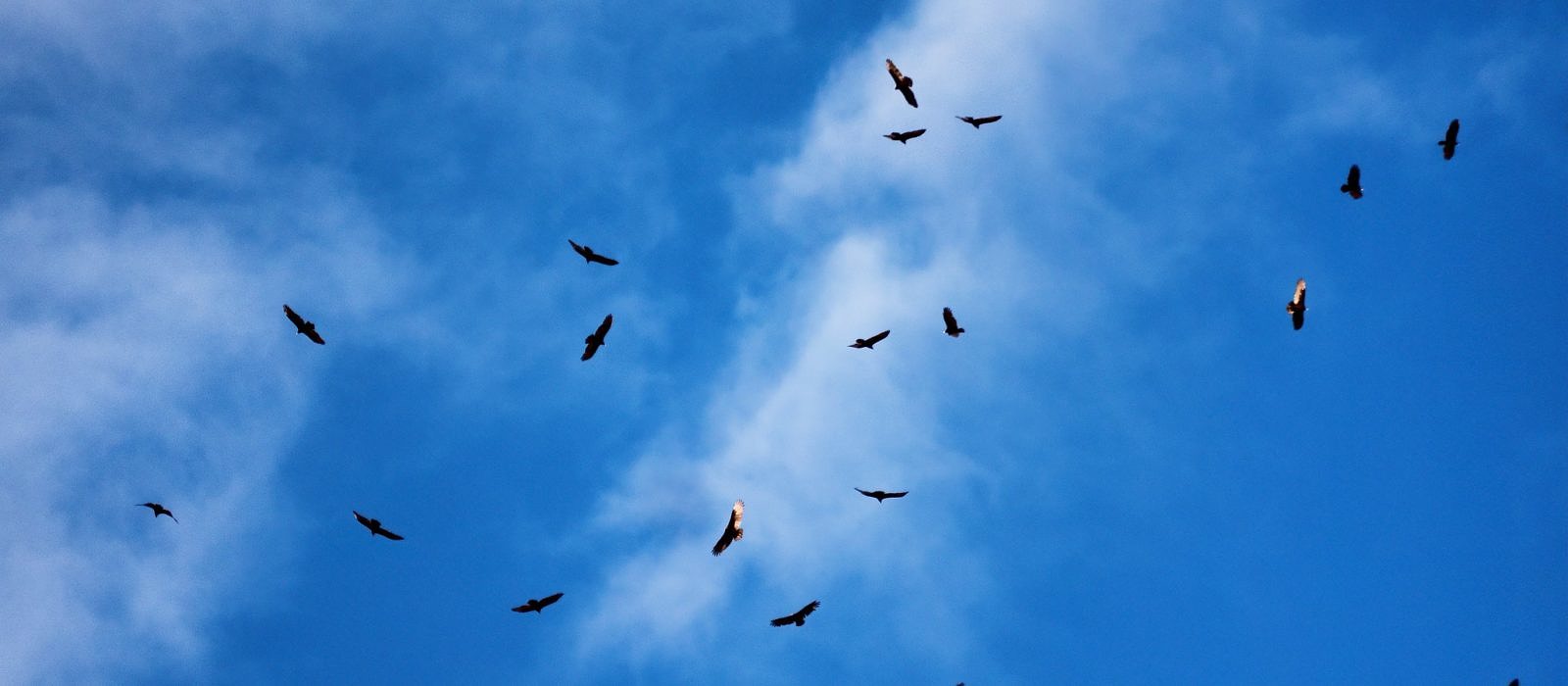A Bird’s Eye View of the 2022 Season
The fall 2022 season — our 18th consecutive year — of the Pack Monadnock Raptor Observatory was a resounding success! Our effort and hours were consistent, our visitors were numerous and happy, and folks got to experience quite a bit of migration. The 10,000th migrant raptor of the season was observed on September 25, an appropriate date for an “average” year. It’s amazing how the 10,000th bird brings feelings of relief, as if we have something to do with this nearly annual milestone. The seasons without five digits of migrant birds of prey tend to feel long like we are missing something.
Celebrating our 10,000th raptor with Daniel Lampe, Katrina Fenton, and Levi Burford (left to right). (photo © Levi Burford)
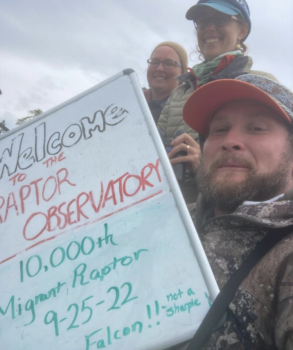
This season saw the highest Northern Goshawk count since 2016. (photo © Mark Timmerman)
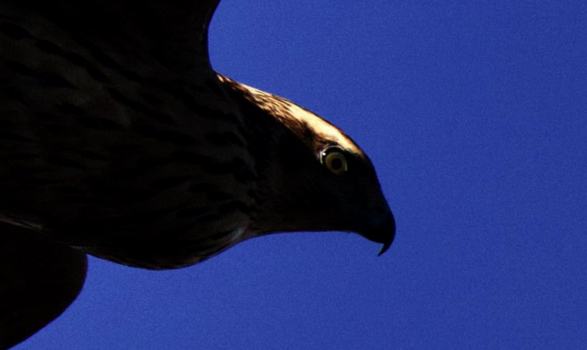
Monthly Trends
Once again, we had our usual countable weather for September. Our first month of effort totaled 223 hours of observation time, coming in slightly above average when compared to years with the same season length. Only two days were lost completely to poor weather. Broad-winged Hawks boosted our September total up over 10,000 migrants, the 7th time we’ve hit that milestone so early in the year. It was the strongest September on record for Bald Eagle migration, and the second-highest for Red-shouldered Hawks and Merlin. Conversely, Ospreys had their poorest showing, with one fewer than the record low set in 2020.
We lost six days in October due to poor visibility which is about average for uncountable days. October tends to be one of our rainier months so our hourly observation time still came in at about average. Turkey Vultures dominated October, through the 400 individuals counted was still well below last year’s record-shattering 611. Bald Eagles tied with 2020 for their best October ever. The highlight of the month was the unprecedented Red-shouldered Hawk flight. Throughout the month 246 Red-shouldereds were counted, 86 of them on October 29 alone. If you were looking at the region, you might note that Quaker Ridge in Connecticut also had a record red-shouldered flight this season.
November had a lot of southwest wind but had higher than average observation time. The wind direction didn’t bring precipitation like the south and southeast winds tend to, but it did bring warmth, haze, and a lack of migrant raptors. Still, the 330 birds counted was above average for the 11 years that the month has had consistent coverage. It was the best November for Northern Goshawks that Pack has had since 2016, with higher numbers of adults than in most years recently. We also had the second-highest Golden Eagle and third-highest Red-tailed Hawk counts for the month of the project. Most noteworthy, a Broad-winged Hawk was photographed on November 2, a new late date for the species at the Hawk Watch and one of the latest dates for this species in New Hampshire overall.
A juvenile Broad-winged Hawk flew to the west of the observation platform on November 2. (photo © Mark Timmerman)
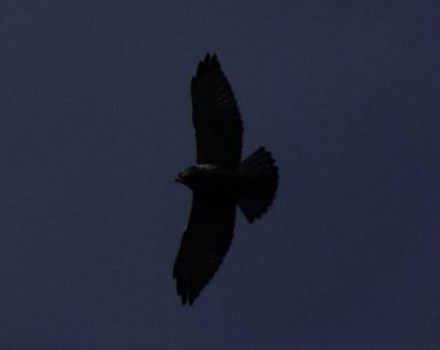
The Boreal Chickadee made a brief appearance at the Pack Mondadnock Raptor Observatory. (Photo © Phil Brown)
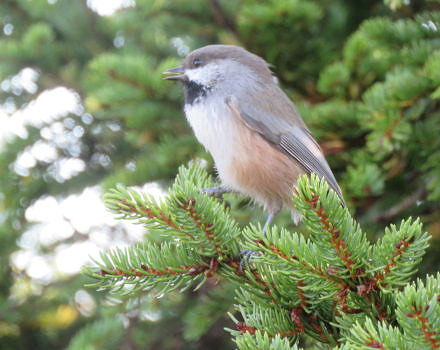
Non-Raptor Highlights
2022 brought a diversity of birds to the Observatory, with a total of 96 non-raptor bird species were recorded. Highlights included our first count records for Baltimore Oriole and Red-throated Loon. Another special bird of the year was a Boreal Chickadee, marking the fifth season since 2005 that we’ve had one at the watch.
A total of 532 Monarch Butterflies were observed, far from any sort of record. The local drought in southern New Hampshire is suggested as a possible reason for low migration numbers. Migrant monarchs weren’t able to nectar efficiently and were delayed a little longer than if the flowers had been fresh around September 9 when the beginning of the peak of Monarch migration is expected.
All bird data were entered into eBird.org and, like the raptor migration data, are available to scientific analysis as well as the general public. Raptor migration data are also available at hawkcount.org and are provided to the Raptor Population Index for long-term analyses and periodic raptor population trend estimates.
Raptor Biologist Katrina Fenton releases a Red-tailed Hawk on Raptor Release Day. (photo © Martha Duffy)
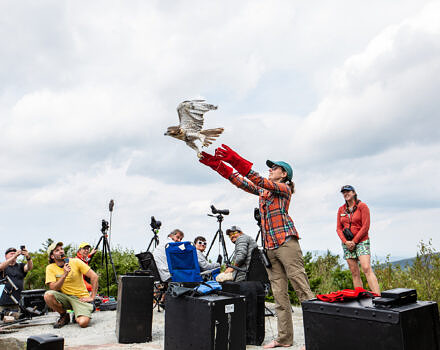
Around 300 students from area schools learned about seasonal migration at the Observatory. (photo © Ben Conant)
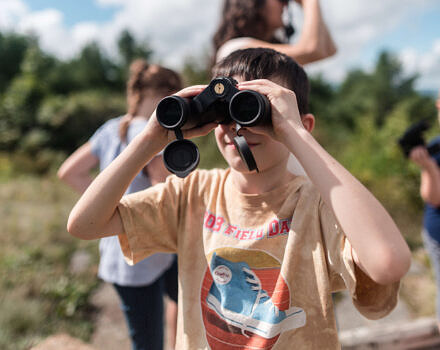
Education & Events
This year we welcomed around 250-300 students from area schools, including Peterborough Elementary School, Jaffrey Grade School, Harris Center homeschoolers, Captain Samuel Douglas Academy, and World Academy. We also greeted a variety of organization, including the NH Audubon Seacoast Chapter, the Appalachian Mountain Club, Cub Scouts Pack 99, and several others. In total, we welcomed 6,076 visitors to the Hawk Watch, making this the 4th-highest visitation season in the history of the project.
The Raptor Release was spectacular this year with five birds throwing off the shackles of their rehabilitation. About 80 folks were in attendance to see the two American Kestrels, two Broad-winged Hawks, and one Red-tailed Hawk take flight from the gloved hands of our staff and friends.
Contact Us
For more information on the Pack Monadnock Raptor Observatory, please contact Phil Brown by email.
